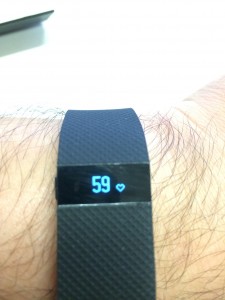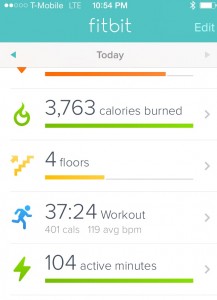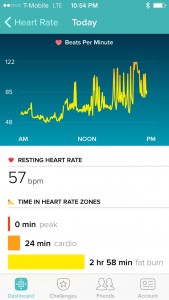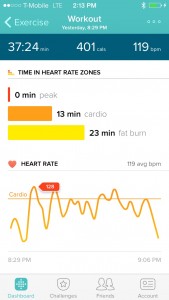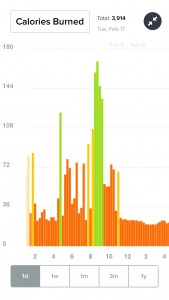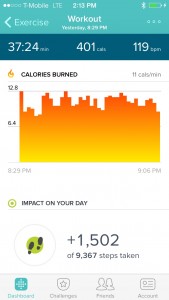My wife got me a fitbit charge HR for Valentine’s Day in the hope I would pay a little bit more attention to my health.
The fitbit charge HR is interesting in that not only does it track steps but it also monitors your heart rate.
One of the questions I (my wife) had was whether kendo truly provides cardio type exercise? Cardio exercise is any exercise that raises your heart rate. So the answer is yes, but I really think her question was whether kendo can burn fat?.
The fitbit measures this by tracking how much time you are in the “fat burning zone”.
From WebMD:
Weight loss is a matter of simple arithmetic: To shed pounds, you must burn more calories than you consume. And when it comes to burning calories, the greater the exertion, the greater the rate at which calories are burned.
Working out at about 60% to 75% of your maximum heart rate (the so-called “fat-burning zone”) burns fewer calories than working out at 75% to 85% of your maximum heart rate (the so-called “aerobic” or “cardio” zone).
Tracking by heartrate seems to be more accurate than tracking steps (which you can fake by just moving your arm). I’ve compared a manual read of heartrate against the charge HR and it seems to be accurate.
The fitbit can be synced to an app.
You can also time your workout which can also be displayed separately from the rest of the activity of the day. For instance, this is 37 minutes of jigeiko and seiza.
The app also has a calorie counter, but you have to enter meals manually. Based on your activity, you can compare how much you are taking in and how much you are burning off.
Badges can be earned for reaching goals and you can compete with other fitbit friends.
It may not be that accurate but activity monitors can serve as a great motivator.

